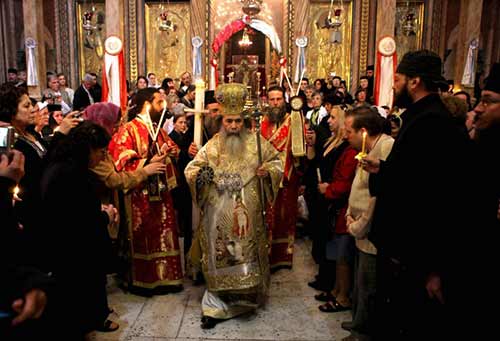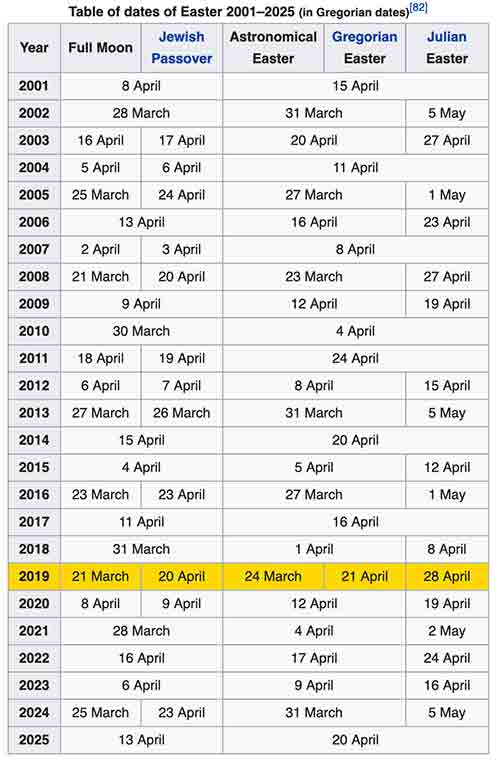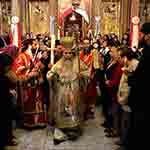
This year Eastern Orthodox Easter Day fell on 28 April. Western Easter Day was a week earlier, on 21 April.
Both East and West follow the Nicene calculation:
The first Sunday after the first full moon on or after the vernal equinox.
The Eastern Orthodox Church continues to follow the Julian calendar when calculating the date of Easter. The rest of Christianity uses the Gregorian calendar (introduced in 1582 with a new leap-year rule: centurial years are only leap years if they are exactly divisible by 400). Currently, the Julian calendar is 13 days behind the Gregorian.
The East also requires that Easter takes place after the Jewish Passover in order to maintain the Biblical sequence of Christ’s Passion. The West does not follow this, so, occasionally, Western Easter takes place either before or during the Jewish Passover.
The West does not use the actual date for the vernal equinox, but a fixed date (March 21), nor does it use the astronomical full moon but the “ecclesiastical moon,” based on tables created by the church.
Christians celebrated a common date for Easter between 325 and 1582, the latter being the date of the West’s change to the Gregorian calendar. The two dates, East and West, still coincide when the full moon following the equinox comes so late that it counts as the first full moon after 21 March in the Julian calendar as well as the Gregorian. This happened in 2010, 2011, 2014, and 2017, and will next happen 2034.
The World Council of Churches (WCC) proposed calculating Easter from the actual equinox and the full moon at the meridian of Jerusalem (the scene of Christ’s death and resurrection). The following table (source) shows this astronomical Easter in comparison to others (Passover commences at sunset preceding the date indicated):

I would be in favour of moving to the World Council of Churches proposal unless it risked ending up with three rather than two dates for Easter!
There is also a proposal to remove the association with the Moon (and hence links with the lunar Passover tradition) and fix the date of Easter to be conveniently the same Sunday each April. I would be saddened at such another loss of our connections with nature. There we stand, as we have for centuries, under the full moon lighting our Easter fire; with the full moon so wonderful, before electric light, for our human celebrations. I also do not think it is likely. You can read more about this movement here.
On the Eastern practice of having Easter after Jewish Passover: others (readers here) may know {or find (online) reference to} how ancient this tradition is, and how ingrained this is. If it is, it may prevent the simple solution of the WCC.
This post is in the spirit of Throwback-Thursday.
If you appreciated this post, consider liking the liturgy facebook page, using the RSS feed, and/or signing up for a not-very-often email, …
Instagram’s @liturgy is the new venture – if you are on Instagram, please follow @liturgy.




“…unless it risked ending up with three rather than two dates for Easter!”
And with the Orthodox, you know that’s exactly what will happen (if not four or five)!
The Eastern church does not require that Pascha fall after the Rabbinic 15 Nisan. It simply works out that way because the Julian full moon is 4 to 5 days behind the astronomical full moon, while the Rabbinic full moon is closely aligned with the astronomical.